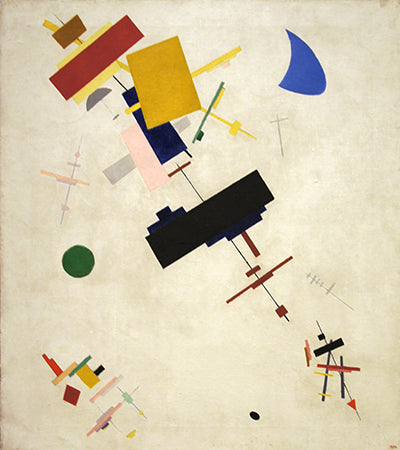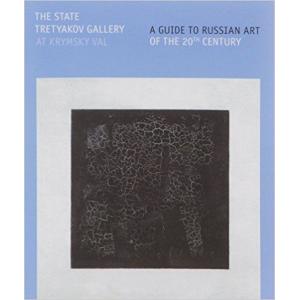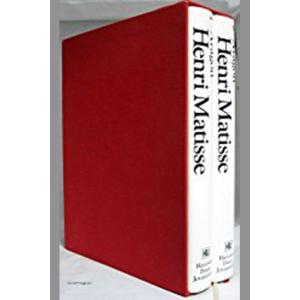The Austere Style
by Cathy Locke

Viktor Popkov, “The Builders of the Bratsk Hydrolectric Power Station,” 1960, oil on canvas
The austere style was the Russian art movement that followed Soviet Realism, roughly lasting from 1955 to 1970. It was a movement that grew from a shift in politics with the death of Joseph Stalin (1878-1953) and the emergence of the Thaw. The Khrushchev Thaw (also referred to as simply the “Thaw”) marks the period from 1953 to 1964, directly after Stalin’s death, when the country was led by Nikita Khrushchev (1894–1971). The Thaw initiated a transformation and the de-Stalinization of Russia, which eventual dissolved the Soviet Communist Party. For the first time in decades the Russian people were allowed some freedom as information in the media, arts and culture were opened.1 The Russian people were now allowed to express their own unique passions more or less freely. Young artists began the search for their new voice and in doing so developed a completely new Russian hero.
The very term “austere style” refers to the harsh reality of Soviet life. The Builders of the Bratsk Hydroelectric Power Station (1960) by Viktor Popkov (1932-1974) was the first painting to be labeled as “austere style” by Russian art critic Alexander Kamensky.2 This movement symbolized the art of the 1960s in Russia and was characterized by simplified modeling of forms, harsh edges, dramatic contrasts and bold color usage. The theme of this painting was timely as all of the resources of the entire country of Russia were focused on the construction of the Bratsk hydroelectric station from the late 1950s to the early 1960s. The country’s goal was to complete the station by 1967 to mark the 50th anniversary of the October Revolution. Popkov’s painting marks a dramatic shift from Soviet Realism where life in Russia was made to be a fantasy illusion of happy workers living the life of plenty. Popkov’s builders are not engaged in jubilant activity; instead they stand motionless on a stage, engulfed in thought. There are no bright horizons behind them; instead we see a dark background. These workers symbolize the mood of their country, wanting to break out of the stranglehold of Stalin’s dictatorship, ready to think for themselves.
Stalin’s rule marked a dramatic shift in the creative output of Russian artists. The artistic period of the Russian avant-garde (1890-1932) was initially embraced by Stalin’s predecessor, Vladimir Lenin (1870-1924). It was an extremely creative period in Russia, a time buzzing with new thoughts and theories. The avant-garde movement in Russia brought us such artistic movements as neo-primitivism, cubo-futurism, Russian Cezannism, suprematism, constructivism, rayonism and abstraction. Russian pioneers of this period included Natalia Goncharova (1862–1935), Mikhail Larionov (1881-1964), Kazmir Malevich (1879-1935) and Wassily Kandinsky (1866-1944). Lenin encouraged the ideology of these avant-garde artists by opening a number of progressive art and technical schools. This included the Moscow Svomas, Institute of Artistic Culture (INKhUK) and VKhUTEMAS. Established in 1920, VKhUTEMAS was created by Lenin “to prepare master artists of the highest qualifications for industry, builders and professional-technical education.”3 1920 to 1922 was the height of this creative period as new theories on art were passionately and openly discussed in these schools.

Henri Matisse, "Arab Coffeehouse," 1913, oil on canvas
By 1921 the Communist Party’s propaganda machine was beginning to shift their preferences in art. With the death of Lenin in 1924, and Stalin’s emergence to power, schools teaching theories of the Russian avant-garde were quickly dissolved. Stalin restricted art by declaring that it had to have “educational value.” Stalin described Malevich’s work as “bourgeois” art. Artwork “containing no educational value” included the large collection of impressionist and post-impressionist paintings in the Russian museums, which were taken off of their stretcher bars, rolled and shipped off to Siberia. In April 1932, Stalin passed the “Decree on the Reformation of Literary-Artistic Organizations,”4 which established a system of unions for all artists living in Russia. These unions defined the style appropriate for everyone working in the arts; hence a system was created where Stalin could control Russia’s artists. This was the birth of Soviet Realism and it lasted until Stalin’s death. The Soviet authorities put tremendous pressure on artists to convert to a single style. Artists were supposed to extol the achievements of socialism and the wisdom of the Soviet Party leadership, teaching citizens to love the motherland and do all they could for its well-being.

Tatiana Yablonskaya, “Bread,” 1949, oil on canvas
Though Soviet Realism was primarily a propaganda vehicle for the Soviet Party, there were a number of exceptional artworks created in this style. It was a time when fine artists returned to the classical roots of realism. Tatiana Yablonskaya’s first painting after graduating from the Kiev Institute of the Art, titled Bread (1949), brought her a State award as well as fame throughout Russia. This exquisite piece depicts female workers on the Lenin kolkhoz (collective farm), during the early years of World War II. Here we see joyous women producing ample grain to feed their entire country’s population, easily lifting one hundred pound bags of grain onto a steady stream of pick-up trucks. The reality of this period was that Russia experienced a severe drought in 1946 producing an epic famine that spread across all of Russia and the Ukraine. These “collective farms” were nothing more than slave labor camps. Yablonskaya doesn’t concern herself with this reality in her masterful painting. Her play of warm reds, bright blues and bold flashes of white invite us into this happy scene. She has surrounded her central characters with bustling activity with just the right amount of detail and fading contrast. Her three foreground figures are strategically placed to create a strong diagonal line that leads our eye directly into the painting.

Nikolay Andronov, “The Raftsmen,” 1960-61, oil on canvas
Young artists of the period of the Thaw were ready to break out of the vacuum of Socialist Realism. The art of Soviet Realism had grown stagnant because false ideologies had been continuously regurgitated. By the 1960s theme paintings had been exhausted as a genre. In fact, works created in that style were no longer even considered to be art! Soviet art was taken off the walls of the museums and replaced with the work of the avant-garde. Many artists began turning to the legacy of the Russian avant-garde for their inspiration. Artists were searching for coarser approaches to depicting form to portray the reality of Soviet life. Some of the key works of the austere style that were influenced by the avant-garde movement include The Raftsmen (1960-61) by Nikolay Andronov (1929-1998) and Geologists (1962) by Pavel Nikononv (b. 1930).5 These artists employed artistic traditions such as icon painting and constructivism. This was a radical move, which met with extreme criticism from Soviet officials. Ironically these works received the greatest wrath from Nikita Khrushchev, the very person who opened the doors allowing these concepts a voice. The Raftsmen was Andronov’s first major artistic work. When it was first exhibited at the Moscow Union of Artists (MOSKh) in 1962 it met with so much disapproval by senior members of the Soviet Party that Andronov’s membership within MOSKh was demoted. But liberal art critics saw this painting as an excellent example of the progressive new style. Andronov constructed his painting by flattening the forms, treating all areas equally. The four main figures are monumental shapes that connect the foreground with the background. They stand as defiant symbols of uprising lacking the romance of their predecessors as the “heroes of labor.” The lack of perspective on the railroad bridge flattens the space and becomes decorative shapes bordering on abstraction.

Pavel Nikonov, “Geologists,” 1962, oil on canvas
Though The Raftsmen is a distinct departure from Soviet Realism, Nikonov’s Geologists moves light-years away. Here we see figures almost floating in a monochrome landscape of sand, echoing Arab Coffeehouse (1913) by Henri Matisse (1869-1954). Geologists was the artist’s first serious work and was also exhibited for the first time at the MOSKh show in 1962. Inspired by the artist’s four-month trip to Siberia, where he took part in a geological expedition, Geologists depicts a new brand of heroes. The artist takes his real-life experience of stumbling upon lost tourists, while miles from civilization on his geological expedition. He has simplified the characters to reinforce the emotion that was stirred by the event. These characters are transformed from reality to become symbols straight out of an icon painting. Nikonov’s approach was influenced by the frescoes painted by Giotto di Bondone (1266-1377) in the Arena Chapel. He has freed his heroes from the burden of bourgeois materialism, while freeing himself – the artist – from the task of meticulously recording daily life. This painting marks a major departure in Soviet art while incorporating several artistic traditions.

Tair Salakhov, “Portrait of the Composer Gara Garayev,” 1960, oil on canvas
There were two distinct approaches that artists took who worked in the austere style; one influenced by the Russian avant-garde and the other by the stylistics of neo-realism. Tair Salakhov’s (b1928) Portrait of the Composer Gara Garayev is reminiscent to the neo-realist approach of Popkov’s The Builders of the Bratsk Hydroelectric Power Station. Both paintings use a limited color palette and simplified forms with a realistic approach. There are few objects in Salakhov’s painting; even the majority of Garayev’s body is simplified by being turned into the shadows. The artist is conveying movement of thought, an extreme level of concentration. Salakhov says of this painting, “I wanted to paint Garayev in an everyday, working environment – whilst fully aware that for a creative person, the everyday working process is one that is out of the ordinary and involves considerable inner tension.”6 Salakhov introduces the theme of intellectual labor to replace the physical labor that characterized Socialist Realism. Here we have a scene with no action whatsoever. The figure is locked in his environment as if just one more puzzle piece. The only movement in the painting is the diagonal created by the back of the figure’s white sweater against the black piano. Salakhov’s hero is a thinker involved in the creative process with no need of any additional props. Sources:
- Khrushchev, Sergei N., Nikita Khrushchev and the Creation of a Superpower, Penn State Press, 2000
- Anna Dikovich, Sergey Yepikhin, Alyona Rasskazova, Kirill Svetlyakov, Natalia Sidorova, Sofia Terekhova, Yana Shklyarskaya and Galina Shubina; The State Tretyakov Gallery at Krymsky Val: A Guide to Russian Art of the 20th Century; Paulsen Moscow, 2015, page 186.
- (Russian) Great Soviet Encyclopedia, Вхутемас (Russian) "подготовить художников-мастеров высшей квалификации для промышленности, а также конструкторов и руководителей для профессионально-технического образования" – Собрание узаконений и распоряжений Рабочего и Крестьянского Правительства, 1920, 19 декабря, № 98, ст. 522, с. 540 – Great Soviet Encyclopedia, Вхутема
- https://prezi.com/fva2huzdt0wb/russian-art-culture-before-and-and-under-...
- Anna Dikovich, Sergey Yepikhin, Alyona Rasskazova, Kirill Svetlyakov, Natalia Sidorova, Sofia Terekhova, Yana Shklyarskaya and Galina Shubina; The State Tretyakov Gallery at Krymsky Val: A Guide to Russian Art of the 20th Century; Paulsen Moscow, 2015, page 182.
- Anna Dikovich, Sergey Yepikhin, Alyona Rasskazova, Kirill Svetlyakov, Natalia Sidorova, Sofia Terekhova, Yana Shklyarskaya and Galina Shubina; The State Tretyakov Gallery at Krymsky Val: A Guide to Russian Art of the 20th Century; Paulsen Moscow, 2015, page 195.
About the Author:
Cathy Locke is an award-winning fine art painter, professor, and published writer, specializing in Russian art of the 19th and 20th centuries. She organizes annual art excursions to Russia every summer and is the editor of Musings-on-art.org.
Russian Art Tours – www.russianarttour.com
Cathy Locke’s artwork – www.cathylocke.com









